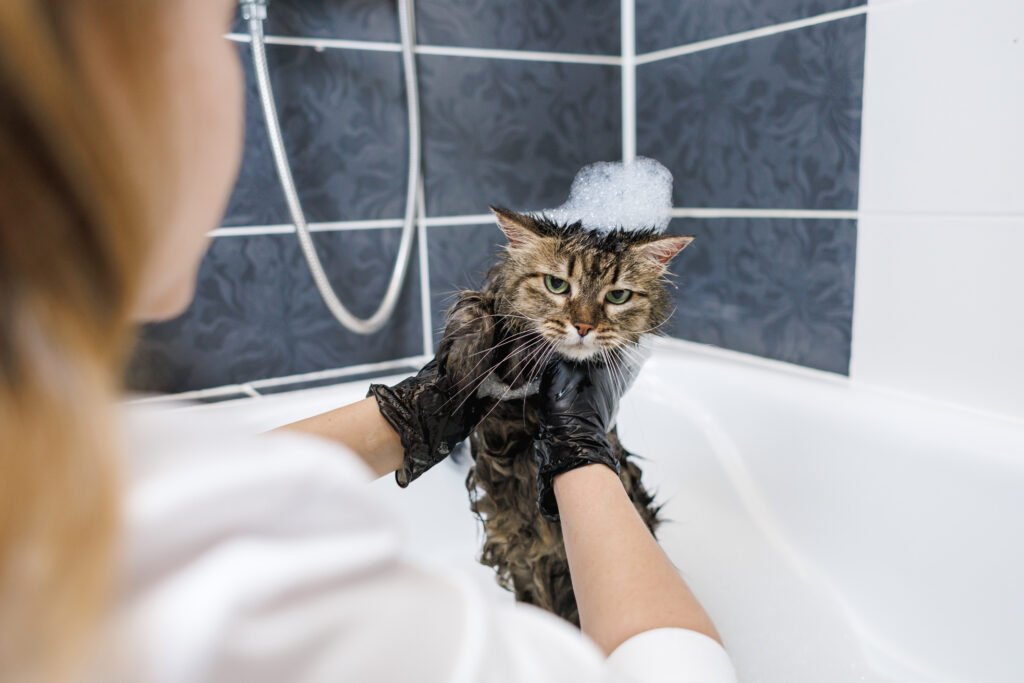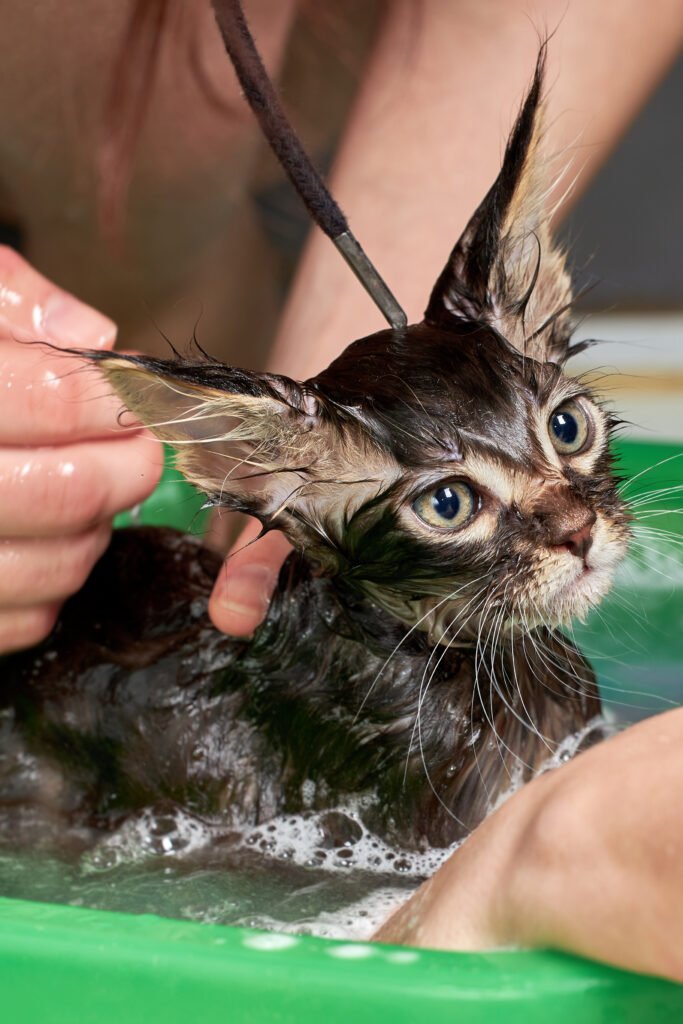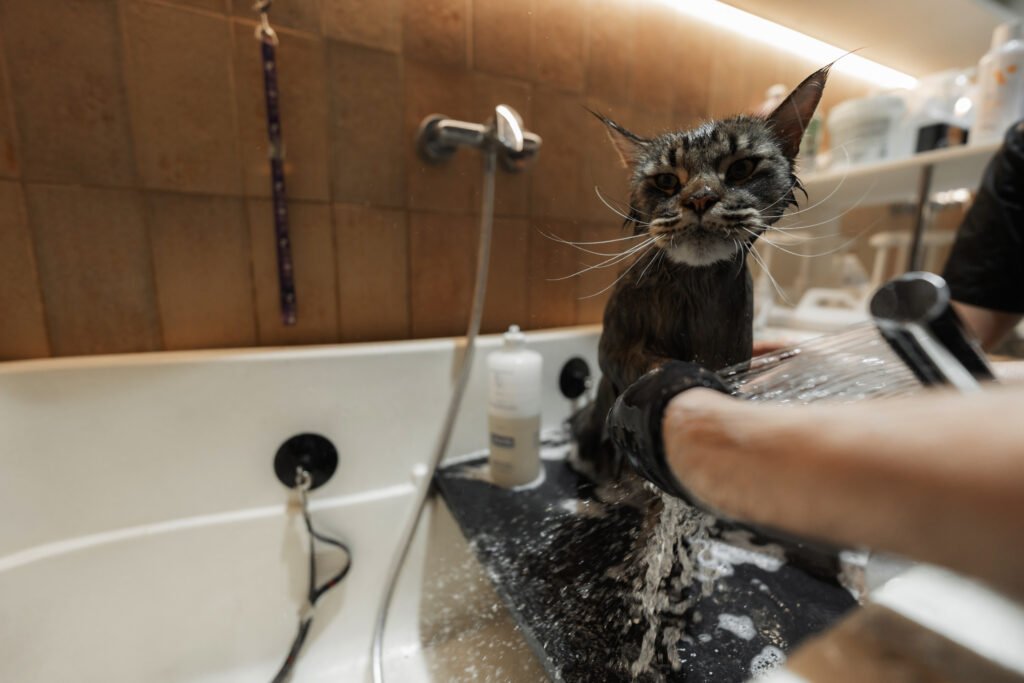Caring for your cat includes more than just feeding them and giving them a cozy place to sleep. Bathing your cat and cleaning their ears can help keep them healthy, clean, and comfortable. Many cat owners find this grooming routine challenging, but with the right approach, it can be easier for both you and your feline friend. Below are some practical tips for bathing your cat and cleaning their ears safely and efficiently.

Preparing Your Cat for Bath Time
Before starting the bath, preparing your cat and the environment is important. Cats aren’t typically fond of water, so it is key to ensure they’re calm and comfortable. Start by brushing your cat thoroughly to remove any loose fur and dirt, which will help prevent matting when they’re wet. Gather everything you need ahead of time—such as pet-friendly shampoo, a large towel, and a cup or sprayer for rinsing—so you won’t have to search for items mid-bath. Ensure the room is warm and free from distractions that might stress your cat out.
Setting Up a Safe Bathing Area
Choose a small, enclosed space like a bathroom where your cat won’t feel exposed. If you’re using a sink or tub, place a rubber mat at the bottom to prevent slipping, as cats often feel insecure on slippery surfaces. Fill the basin with just a few inches of warm water—never too hot or cold, as cats are sensitive to extreme temperatures. Make sure you have a gentle, cat-safe shampoo on hand. Avoid using shampoos meant for humans, as these can irritate your cat’s skin. A hand-held sprayer or a cup helps rinse without getting water in sensitive areas like the ears and eyes.

Bathing Your Cat Gently and Effectively
Once everything is ready, gently place your cat into the water. Start by wetting them slowly from the neck down, avoiding their head. Use a gentle, soothing voice to keep your cat calm. Lather the shampoo on their body, massaging it gently into their fur. Be mindful of sensitive areas and avoid the face. After a thorough lather, rinse them carefully, ensuring there’s no shampoo residue left in their coat, as this can cause skin irritation. Make sure to rinse thoroughly, as leaving soap in the fur can also lead to matting and discomfort.
Drying Your Cat After Bath Time
Once your cat is clean, carefully lift them out of the water and wrap them in a large, absorbent towel. Gently pat them dry, avoiding vigorous rubbing that could irritate their skin. Most cats don’t enjoy the sound of a blow dryer, so if you need to use one, ensure it’s on the lowest heat and noise setting and hold it at a comfortable distance from your cat. Otherwise, you can place your cat in a warm, quiet room and let them dry naturally. Be sure they’re comfy and safe as they groom themselves dry.
Cleaning Your Cat’s Ears
After the bath, it’s a great time to clean your cat’s ears, as they’re already calm and used to grooming. Use a cotton ball or soft cloth moistened with a vet-approved ear-cleaning solution. Gently lift your cat’s ear flap and wipe the visible parts of the ear, careful not to push anything down into the ear canal. Never use cotton swabs, as these can damage the ear if inserted too far. If your cat shows signs of discomfort or if you see redness, discharge, or a foul odor, consult your veterinarian, as these could be signs of infection.
Following these simple steps can help your cat feel clean, comfortable, and healthy. Bathing and ear cleaning might take some time for both of you to adjust to, but with patience and consistency, it can become a positive experience for you and your cat.


Leave a Reply